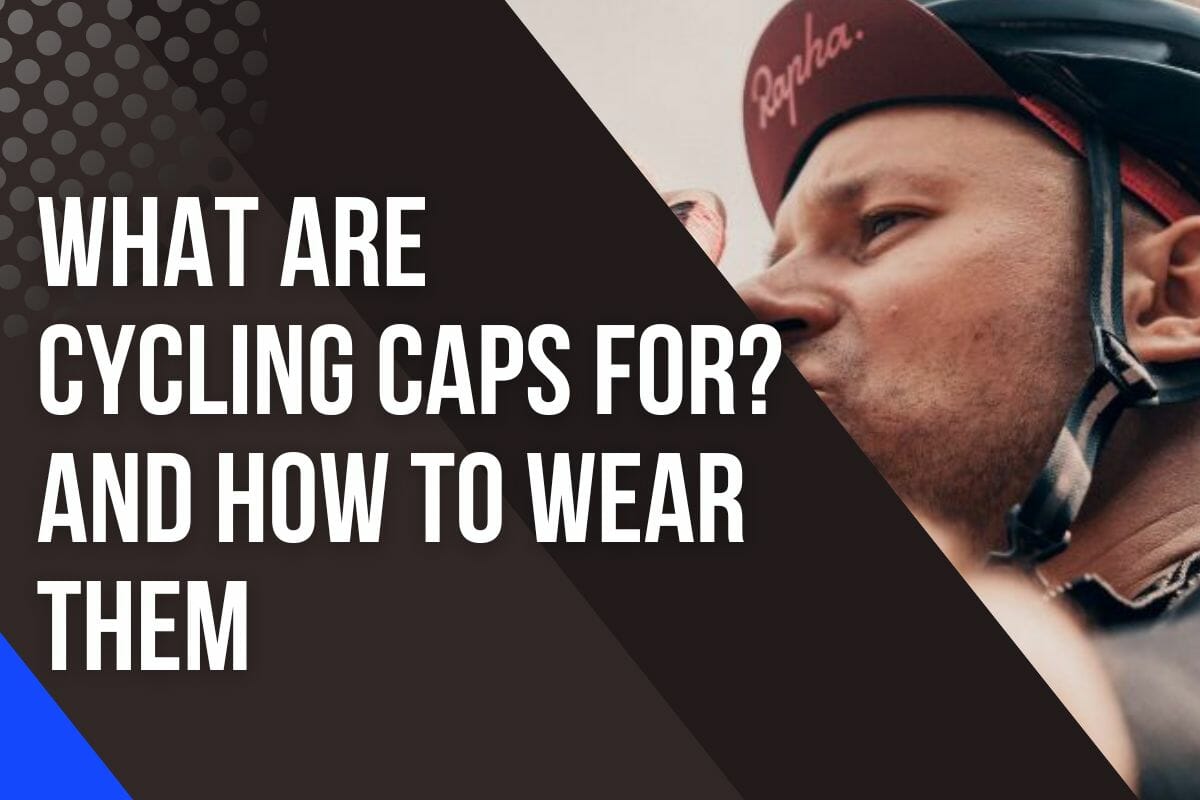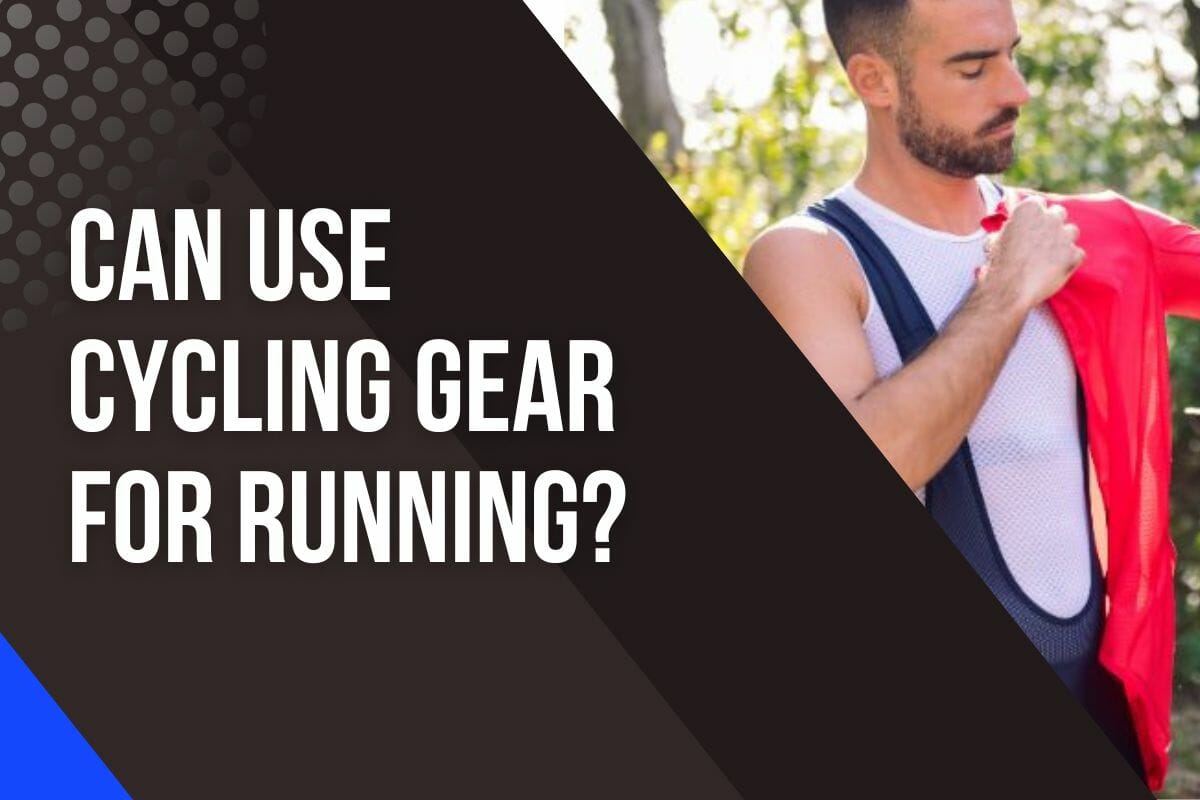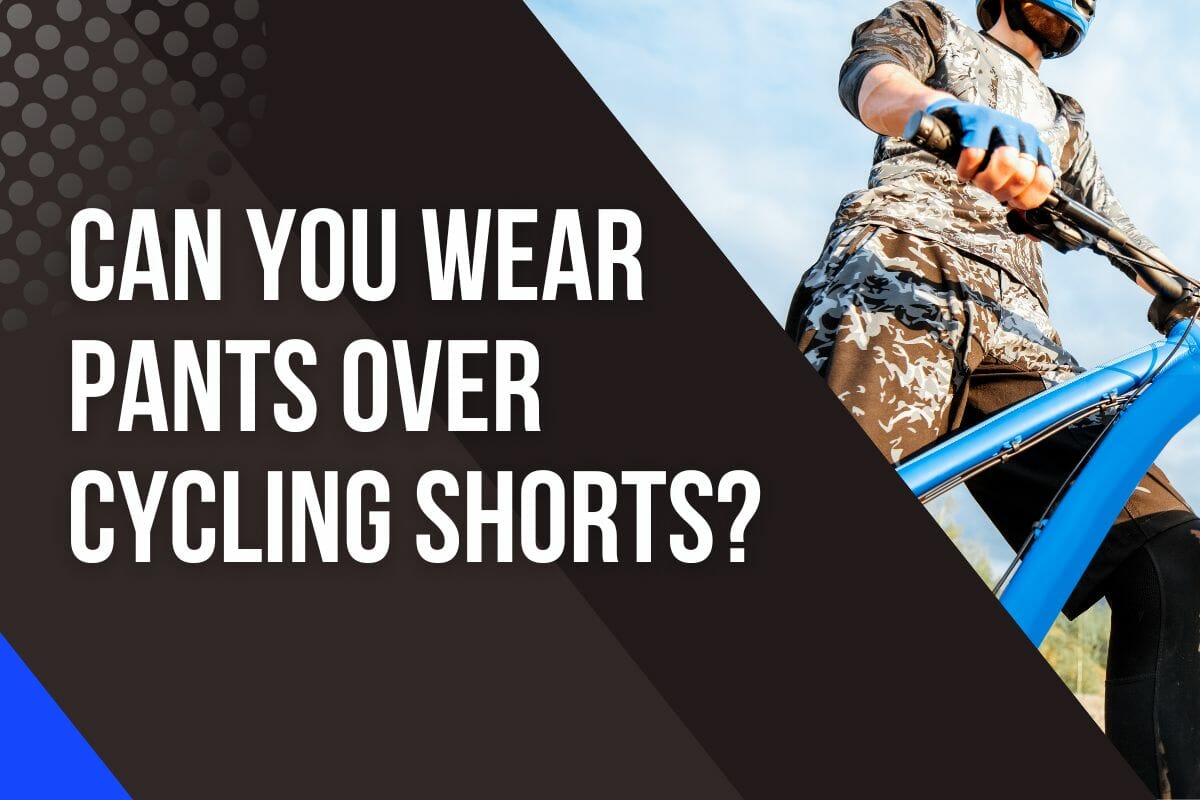What Are Cycling Caps For And How To Wear Them

Whether you’re just starting out or a veteran cyclist looking for an edge, there’s one accessory that you may have overlooked: the cycling cap.
But what exactly are they for? And how should you wear them?
In this article, we’ll explore the many benefits of cycling caps and answer some of your most pressing questions about this piece of headgear—from its protective qualities to its fashionability.
So grab your helmet and let’s get pedaling!
Why Should You Wear Cycling Caps
Cycling caps are a timeless part of cycling culture, an accessory that has been embraced by professional cyclists for decades.
Like a beacon in the night sky, these bright and stylish hats provide riders with not only fashion but functional benefits and protection from the elements as well.
Below I explore 5 benefits of wearing a cycling cap.
Say Goodbye To Sweat And Raindrops
Cycling caps are designed to be worn underneath a cycling helmet and help keep your head warm or cool, depending on the temperature.
One of the main reasons I wear a cycling cap is to keep rain and sweat out of my eyes.
On those cold, wet days when I’m out riding, it’s essential that I can see clearly and not have the rain dripping into my eyes.
The cycling cap helps me do this by providing an extra layer of protection against the elements.
Even on sunny days, when sweat can be just as annoying as rain, wearing a cycling cap stops it from running down my face and obstructing my vision.
Wearing a cycling cap is an easy way to upgrade any ride while staying comfortable and dry no matter what Mother Nature throws at you.
Shield Yourself From The Fiery Sun
A cycling cap is also a great way to protect yourself from the sun.
On those hot summer days when the sun is beating down, having a light layer of material between your head and the sky can make all the difference.

It’s especially useful for professional cyclists, who often ride in hot conditions and need to ensure their head stays cool to help regulate their body temperature.
Moreover, they can also help block wind gusts while on the bike so you stay focused on your ride instead of dealing with wet hair blowing into your face.
Protect Your Head From Strong Gusts
In addition to providing the basics of keeping your head warm, cycling caps are windproof too.
This makes them ideal for riding in windy conditions or protecting your head from gusts coming around corners on the road.
Also, since they cover less of the face, you can easily keep an eye on your surroundings while riding.
They’re made from materials that help keep your head warm and wick away moisture from sweat.
The overall design is intended to be breathable but still effective against wind-chill temperatures, so you can stay comfortable even when cruising at high speeds or climbing steep hills.
Keep Your Head Cozy And Warm In Colder Weather

As someone who loves to ride in colder temperatures, I can tell you that having just a helmet and no other head protection can get quite uncomfortable.
Wearing a cycling cap is an effective way of keeping your head warm during a ride. It’s been proven that 10% of body heat escapes through the head, so having a cap on can be incredibly beneficial in maintaining a normal body temperature. It’s especially useful for long rides, where the chill of the wind can be a real problem. (1)
The material of most cycling caps is designed to be breathable enough to allow perspiration to escape while still retaining some body heat.
This helps keep my head from getting too cold during longer rides.
Keep Insects And Bugs Out Of Your Hair
A cycling cap is a great way to keep insects and bugs out of your hair while cycling. The cap is designed to fit snugly on your head, providing a barrier between your hair and any pesky critters.
The material is usually thick enough to prevent most bugs from getting through.
It also covers the back of your head, which are the areas most vulnerable to bug bites.
The cap also provides a bit of shade to your head and face, making it even less attractive to bugs.
Easy Hair Management And Keep Your Helmet Clean
It’s hard to deny the importance of a cycling cap when it comes to keeping your hair and helmet clean.
I’m sure most cyclists have experienced the feeling of having their heads covered in sweat and oil after a hot ride.

With a cycling cap, however, you can avoid this nasty feeling by wicking the sweat away from your scalp.
Plus, wearing a cap under your helmet helps keep it cleaner for longer by preventing oils and sweat from coming into contact with the helmet’s foam padding.
How To Wear A Cycling Cap
Now we know that cycling caps are a useful accessory for any cyclist.
They provide protection from the sun and rain, keep sweat out of your eyes, and can even add some style to your cycling kit.
But how exactly do you wear one?
Here’s what you need to know:
- Ensure that the peak is facing forwards or up, depending on which look you’re going for
- Pull it down just above your eyebrows so that it stays firmly in place while riding
- Keep the back of the cap slightly higher than normal to improve ventilation and prevent overheating
- Cycling caps are useful for post-ride conversations, protecting scalp from sunburn, and looking stylish.
- Podium caps with sponsor logos are popular for podium ceremonies
- Cycling caps can be worn underneath a helmet in rainy weather for added protection
- Never ride with just a cycling cap, as it provides zero protection in case of a crash
Cycling Caps Vs. Skull Caps: Which One Is Better?
Cycling caps and skull caps may seem like similar pieces of headwear, but there are several noticeable differences between the two.
A primary difference is the presence or lack of brim.
Cycling caps are known for having a semi-rigid brim extending from the front to back while skull caps feature a low-profile design with no brim at all (like a beanie).
This means that while cycling caps can offer some protection from rain or sun exposure, skull caps don’t provide much in this regard as they don’t provide consistent coverage over your face and eyes.
For cyclists in particular, cycling caps are an ideal choice over skull caps because of their protective features with regards to shielding riders’ eyes from sweat or rain drops.
Not only does this help improve overall comfort while cycling, it also improves visibility on those days when things get wet out there!

In comparison, skull caps aren’t really designed to protect against sweat or rain dropping on your face.
Skull caps are more suitable for riding during cold weather as they provide many insulated options.
Also, if you’re simply looking to keep your head warm while running errands, then a skull cap can be just as effective at doing so without having to worry about added protection from the weather.
Are Cycling Caps Really Necessary?
Cycling caps are not necessary for every rider.
If you are going out only once in a while, then it’s probably not important for you to buy a cycling cap.
But if you are an avid cyclist and spend hours in the saddle every week, then investing in an appropriate cycling cap might be beneficial for both your performance and overall comfort on the bike.
While some riders may choose to use other headgear instead of a traditional cycling cap, for optimal protection against different elements, nothing beats a well-fitted cycling-specific product designed specifically for this purpose.
Are Cycling Caps Fashionable? Will It Make Me Look Weird?
Cycling caps have come a long way in recent years and are becoming popular among active individuals, not just those who ride.
However, whether or not cycling caps are fashionable really depends on the person wearing them.
When I first started cycling, I was hesitant to wear a cycling cap. To me, they seemed ridiculous and out of place in everyday life.

Those who embrace comfort over fashion may think that cycling caps look great both on and off the bike.
I’ve since discovered that the key to wearing a cycling cap is finding one with an appropriate design and color for your wardrobe.
Cycling caps come in a variety of styles and colors, so it’s easy to find one that matches your outfit.
It is true that athletic gear is becoming increasingly commonplace in day-to-day outfits as people value comfort more.
This means that cycling caps can now be seen worn off the bike, but always with the caveat of personal taste and preference.
Remember that if you feel confident wearing them away from your bike then just do it. Who cares?
How Do I Choose A Cycling Cap?
Choosing the right cycling cap isn’t as hard as it seems. There are several factors to consider, such as size and fit, fabric choice, and style.
When picking out your perfect cycling cap, you want to make sure that it fits comfortably and securely on your head.
The best way to do this is by trying caps on in person or measuring the circumference of your head before ordering one online.

You’ll also want to be mindful of the material used for your cycling cap; some materials may not be breathable enough or they might even add too much weight when you’re riding.
Finally, pick a style that expresses who you are and what kind of rider you are.
Whether you prefer a classic look with stripes or something more modern like reflective logos, there’s a cycling cap out there for everyone.
With these tips in mind, finding the perfect cycling cap will be easy-peasy.
Are There Different Sizes Of Cycling Caps?
When it comes to cycling caps, one size fits almost everybody. But in some cases, you may want or need something slightly more customized.
A lot of the higher-end cycling cap manufacturers offer a variety of different sizes for their products, allowing you to find a better fit for yourself.
These caps are usually both incredibly light and highly stretchable and provide adjustable closure systems that make it easy to achieve a secure fit.
Why Are Cycling Caps So Small?
Cycling caps are small so that they can fit under your helmet and maintain aerodynamics while also keeping sweat, rain, and the sun out of your eyes.
A standard-size normal hat will cause discomfort when worn directly under a fitting cycling helmet and may even prevent it from resting securely against the head.

This can create openings for hazards such as stray stones that could otherwise be blocked by the helmet itself.
With a sleek cycling cap, you get improved comfort and higher levels of protection than with a larger hat that could have gaps between it and the helmet.
Should You Wear A Cycling Cap With An Aero Helmet?
The question of whether or not you should wear a cycling cap with an aero helmet is definitely up for debate.
On one hand, cycling caps can provide great protection from the sun and wind, features which many modern helmets lack.
On the other hand, wearing a cap could potentially add drag to your ride and negate the aerodynamic effect of the helmet.

In general, an aero helmet provides more flexibility than simply wearing a cap.
While it can be difficult to quantify the exact benefits of an aerodynamic design, it’s generally accepted that they are more efficient in slicing through air resistance.
Wearing a cycling cap beneath an aerodynamic helmet may add comfort but could reduce its overall benefit when it comes down to race times or speed performance.
Ultimately, if you do choose to layer up with both pieces of headwear, be sure that you know what the tradeoffs will be beforehand.
Should You Wash A Cycling Cap?
Yes, you should always wash your cycling caps. Like all clothing items, proper maintenance is key.
Here are some tips to keep yours in top condition:
- Hand wash them with mild soap with colder water after every ride
- Never use a washing machine
- Hang dry or lay flat on a clean surface
- Avoid bleach or harsh chemical cleaners to prevent the color from fading
- Never dry clean, tumble dry, or iron your cycling caps
Cleaning and taking care of your cycling cap prevents the buildup of bacteria which can lead to odors and disease-causing microorganisms in the fabric.

Taking just a few minutes each week to properly maintain your cap ensures that you’ll have one less thing to worry about next time you hit the road.
Do Professional Cyclists Use Cycling Caps?
I have been a passionate cyclist for many years and have seen my fair share of professional cyclists sporting their cycling caps.
Do they still wear them? The answer is – yes, they do! Professional cyclists still use cycling caps, albeit less than before.
Back in the day, almost every professional rider could be seen wearing a cap under their helmet during races.
This was because helmets weren’t mandatory yet and it provided both warmth and protection from the sun.

Even when helmets did become mandatory, some racers would still don the classic cycling cap to keep their head warm.
These days you can see fewer professional riders wearing cycling caps, but there are still those who do it for various reasons – to protect from the sun or rain, to stay warm on cold days or even just as a part of their cycling kit.
So while they may not be as popular as before, you can still spot those classic cycling caps on today’s professional riders.
Are Cycling Caps Worth It?
A cycling cap is a great option for those cyclists who are passionate about the sport and ride their bicycle regularly.
Not only do they prevent rain and sweat from running into your eyes, but they also do a decent job at keeping your head warm during colder days.
Wearing a cycling cap will also extend the lifespan of your cycling helmet, as the sweat won’t come in contact with it.
However, keep in mind that regular and careful maintenance is necessary for cycling caps and so washing them in a machine should be avoided at all costs.
On the other hand, if you are someone who cycles from time to time or plan on bicycling in really cold environments then a cycling cap is not necessary.
In this case, insulated skull caps do an even better job of keeping your head warm while you bike.
Ultimately, investing in a cycling cap can make any ride more enjoyable, especially when faced with harsh weather conditions or excessive sweat due to long rides.





